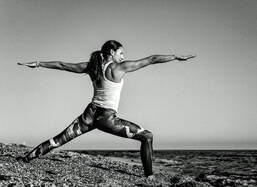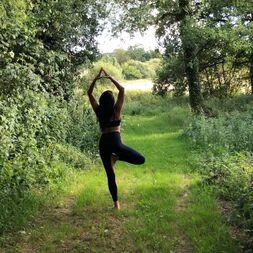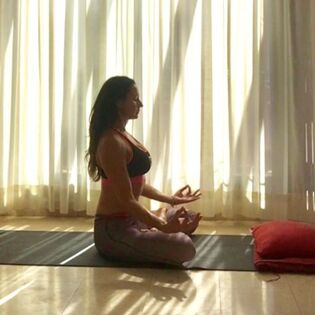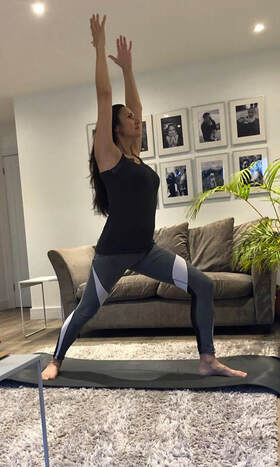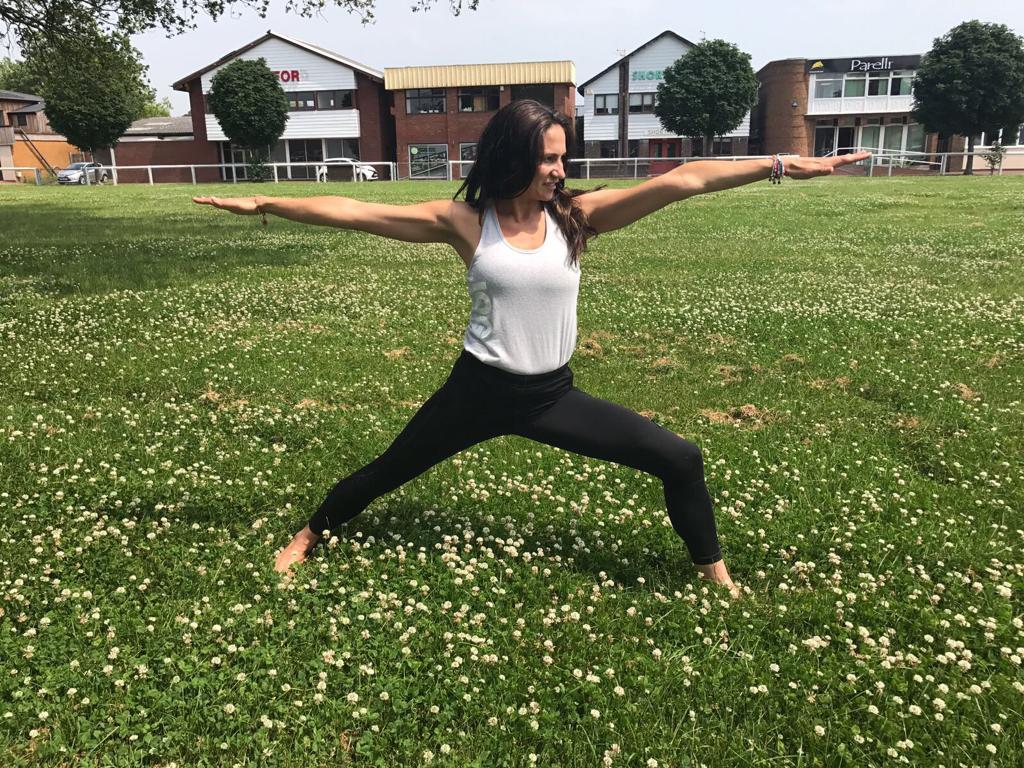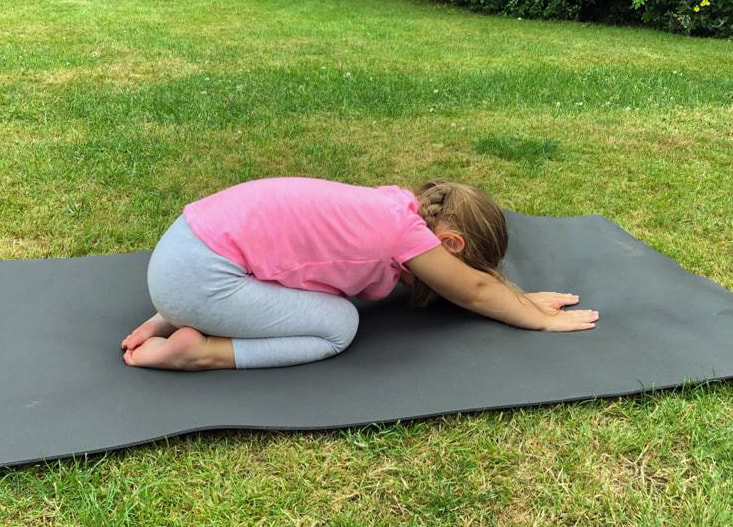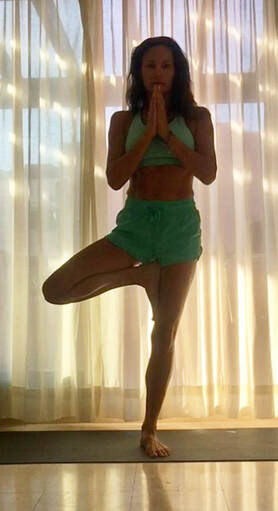I have been teaching Hatha Yoga for more than 15 years in studios and more recently in my own online video classes, covering a wide range of people’s abilities from beginners to the more advanced. So even if you have never done yoga before or just wish to get back into it, I have a class that will be suitable for you. For a brief description of each class and what it entails why not visit my “Classes” page then get in contact to join in?
Q: I am not very flexible, is there anything in your classes I can do?
A: Yes, the aim of yoga is to help with your flexibility and range of movement. You can always start with a chair yoga class.
Q: How much space will I need?
A: Basically, enough room to lay down on the floor will be sufficient.
Q: Do I need any special equipment?
A: No, that is the beauty of yoga, just some non-restrictive clothing and space will get you going.
A: Yes, the aim of yoga is to help with your flexibility and range of movement. You can always start with a chair yoga class.
Q: How much space will I need?
A: Basically, enough room to lay down on the floor will be sufficient.
Q: Do I need any special equipment?
A: No, that is the beauty of yoga, just some non-restrictive clothing and space will get you going.
Yoga is much more than a series of postures (asanas) or meditations, it is also a state of consciousness and stillness of the mind whilst improving your wellbeing. The word yoga in Sanskrit is Yuj, which can be translated as “centre one’s thoughts”. It also means to “join and connect” effectively bringing you into balance. Keeping everything in balance and following a healthy discipline makes life feel calmer and centred.
Hatha yoga.
Hatha yoga classes are suitable for all abilities because of its slower pace. However, though it is gentle it can still be challenging both physically and mentally.
The word “Hatha” is made up of two elements, “Ha” – Sun and “Tha” – Moon.
It is the balancing of Sun and Moon energies with the body.
Hatha yoga consists of 10 Mudras (gestures), 8 cleansing methods, 9 Kumbhakas (breaths) and 84 Asanas (postures).
Hatha yoga.
Hatha yoga classes are suitable for all abilities because of its slower pace. However, though it is gentle it can still be challenging both physically and mentally.
The word “Hatha” is made up of two elements, “Ha” – Sun and “Tha” – Moon.
It is the balancing of Sun and Moon energies with the body.
Hatha yoga consists of 10 Mudras (gestures), 8 cleansing methods, 9 Kumbhakas (breaths) and 84 Asanas (postures).
|
Asanas.
An asana is basically a still posture which is designed to stretch the body and awaken the mind. Any posture is done within your body’s limits and its natural alignment without causing harm or pain. The fact that you may not be as flexible or graceful as anyone else is not what matters. What is important is you start yoga, enjoy the benefits of regular practice, and make it part of your life. |
In each class I will guide you through a series of asanas, explaining each one, and if we need to make a slight adjustment for you that is OK.
With practice the postures will become easier as your body starts to adapt, and your bodies alignment and range of movement will improve.
Asanas help balance the weaker areas of the body by distributing your strength naturally, left to right, top to toe, and back to front. Over time your postures will improve. An asana needs to be steady and comfortable. Stretching the body stretches the mind also, as at first it must concentrate on the posture, then later you can think about the breath and relaxation.
Asanas focus the mind and are a way of centring yourself, becoming stiller makes you more aware of when you are moving away from your centre and so gives you the opportunity to deal with the disturbance.
With practice the postures will become easier as your body starts to adapt, and your bodies alignment and range of movement will improve.
Asanas help balance the weaker areas of the body by distributing your strength naturally, left to right, top to toe, and back to front. Over time your postures will improve. An asana needs to be steady and comfortable. Stretching the body stretches the mind also, as at first it must concentrate on the posture, then later you can think about the breath and relaxation.
Asanas focus the mind and are a way of centring yourself, becoming stiller makes you more aware of when you are moving away from your centre and so gives you the opportunity to deal with the disturbance.
|
The breath.
Your breath is what will bring your yoga to life. Good breathing technique is reassuring, calming, and healing. Even in a still pose the breath is never stagnant. When you are concentrating on your breath there is an awareness of cleansing, lightness, and mental clarity, whilst the holding of the breath is dulling the sensations and restricting the body’s natural rhythm. Awareness of the breath will draw the mind to the present moment and allow you to focus. |
In the present.
By focusing the mind on the present your awareness becomes deeper, and you can read the signals the body is telling you in this moment.
Just be in this moment even if it lasts only a minute, as with time and practice these minutes will join and allow a deeper understanding. These blocks of time allow a greater healing and refreshing of the whole body.
Your intention.
Consider what you want to achieve with yoga, it might be better flexibility, increased strength, or more mental clarity, then make a note of you goal so you can focus on it in your practice. Then give yourself time to practice working towards this goal. There is no rush it can easily lead to a lifestyle change for the better.
Practicing yoga.
There is no fixed time of the day to practice yoga, and you do not need much space. Just dress in non-restrictive clothing, and it is best done in bare feet. Socks are acceptable to keep the feet warm.
Below are a few asanas suitable for the beginner.
By focusing the mind on the present your awareness becomes deeper, and you can read the signals the body is telling you in this moment.
Just be in this moment even if it lasts only a minute, as with time and practice these minutes will join and allow a deeper understanding. These blocks of time allow a greater healing and refreshing of the whole body.
Your intention.
Consider what you want to achieve with yoga, it might be better flexibility, increased strength, or more mental clarity, then make a note of you goal so you can focus on it in your practice. Then give yourself time to practice working towards this goal. There is no rush it can easily lead to a lifestyle change for the better.
Practicing yoga.
There is no fixed time of the day to practice yoga, and you do not need much space. Just dress in non-restrictive clothing, and it is best done in bare feet. Socks are acceptable to keep the feet warm.
- Do not eat a large meal before practice.
- Be realistic with the time you allocate to practice; it is better to spend a few minutes on a few asanas giving them your full attention rather than rushing through a complete sequence.
- Quality over quantity. Yoga practice is more than practice it is a way of life.
- Give yourself time so that you can fully absorb the lessons of your practice.
- Do not be impatient in your practice. Practice peacefully.
Below are a few asanas suitable for the beginner.
|
Virabhadrasana (Warrior pose 1).
This pose works the arms and legs, strengthens the back, and opens the chest. Stand with the legs about 1.2 meters apart. Turn your right leg and foot inwards about 60 degrees so you do not twist your knee. Then step to the left with the foot straight ahead, then turn the body so that you face over the left leg. Bend your left knee to about 60 degrees, and with your back straight press the back heel down to straighten the knee. Take your arms out to the sides, turn the palms up and raise the arms overhead to join the palms. As you breath deeply, feel the stretch of the chest and abdomen. Stay in the pose for 10 breaths and maintain awareness of your posture throughout. |
|
Virabhadrasana 2 (Warrior pose 2).
This pose gives self-reliance and independence and the raised head, fearlessness. Take a wide stance so that when the arms are stretched out the hands are above the feet. Turn your right leg and foot inwards about 60 degrees, so you do not twist your knee. Then with your left leg and foot straight ahead, slightly turn the body so that the left shoulder is over the left leg. Bring you hands onto your hips and compare them for height if they are not the same make an adjustment so that they are. Bend your left knee at 60 degrees so that you can only see your big toes, this keeps the knee over the ankle. |
Then raise your arms so that they are parallel with the floor and rotate the arms so that the palms face the floor. Drop your shoulders and look forward over you left hand. Stay in this pose for 10 breaths and maintain awareness of your posture throughout.
To protect the knees in both the above poses your knees must be facing the same direction as the toes of their respective feet.
To protect the knees in both the above poses your knees must be facing the same direction as the toes of their respective feet.
|
Balasana Child pose.
Child pose is useful when you need to rest in your practice. Sit on your heels with your knees together. Fold forward over your thighs, and rest your forehead on to the floor, if possible. You can always rest the head on a pad if that is more comfortable. Then either place your hands in front of you like the picture or the arms can extend backwards so that the hands are near the feet. |
|
Vrikshasana Tree pose.
This is a balancing asana which is designed to straighten the spine, strengthen the thighs, calves, and ankles. Stand with your feet together, inner ankles and inner knees touching. Shift your weight onto your left foot. Bend your right knee and move it out to the side whilst bringing the sole of the right foot up to the inside of the left thigh. Depending on your flexibility you may not get your foot up to the thigh that is OK, just work on your balance and upright posture. Then bring the hands to the centre of the chest with palms together. Stay in this pose for 10 breaths, finding length on each inhale and rooting down with each exhale. |
There is a small selection of video clips on my YouTube channel of these asanas, and fully guided classes are hosted by me on a weekly basis on Zoom.
To access these classes, you need to subscribe, details of how to join us is on the “Classes” page.
For the more advance practitioner I have a few classes in the private area of my YouTube channel, being a member also gives you access to this resource, and for study of the chakras there is an article in the “members area”
I hope to see you in class soon. If you would like a private lesson, please get in contact to discuss the options.
Rebecca.
To access these classes, you need to subscribe, details of how to join us is on the “Classes” page.
For the more advance practitioner I have a few classes in the private area of my YouTube channel, being a member also gives you access to this resource, and for study of the chakras there is an article in the “members area”
I hope to see you in class soon. If you would like a private lesson, please get in contact to discuss the options.
Rebecca.
|
Registrations:
Insurance: Qualifications: |
Data Protection/Privacy notice
:rebecca_wellness_data_protection_11_2020.pdf Cancellation Policy/Refunds: |

